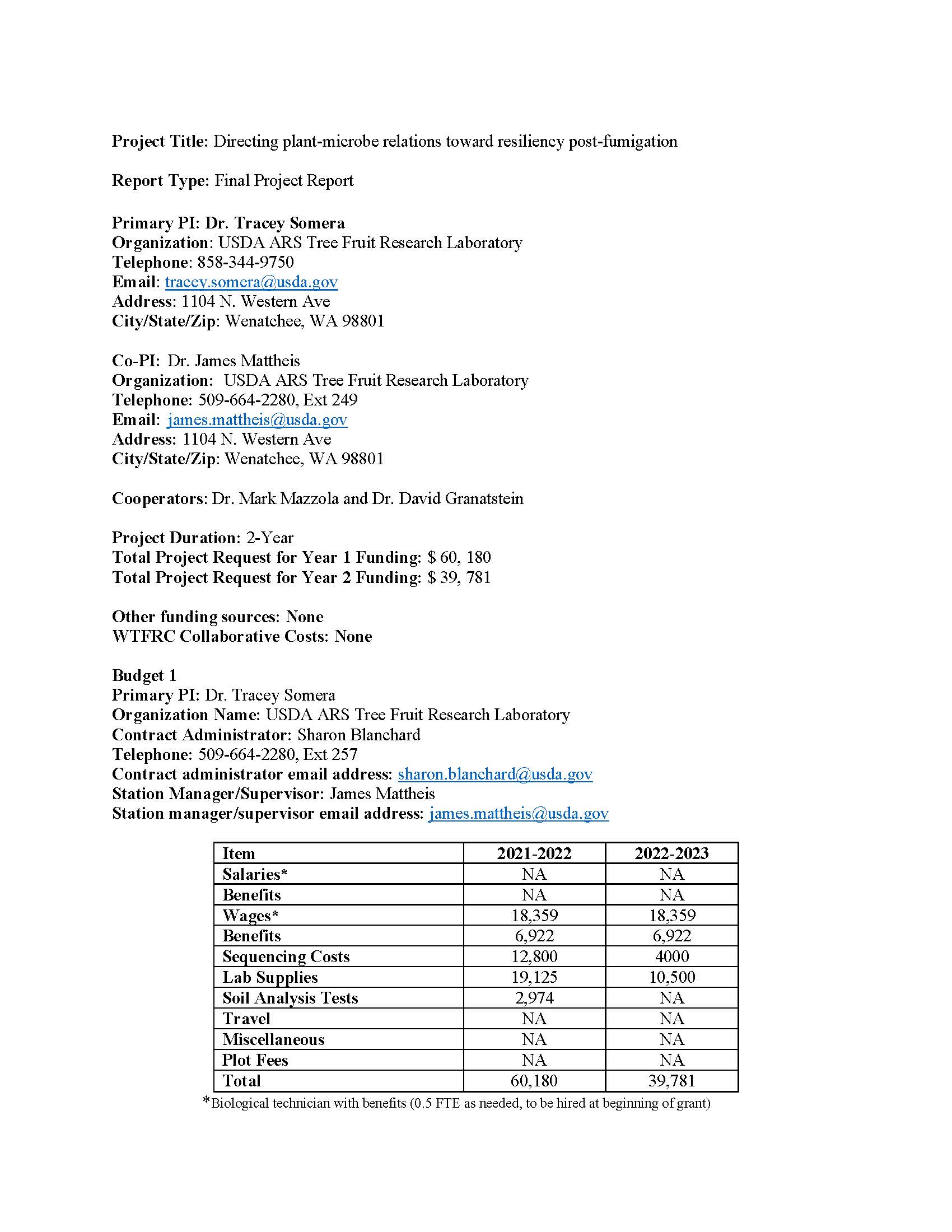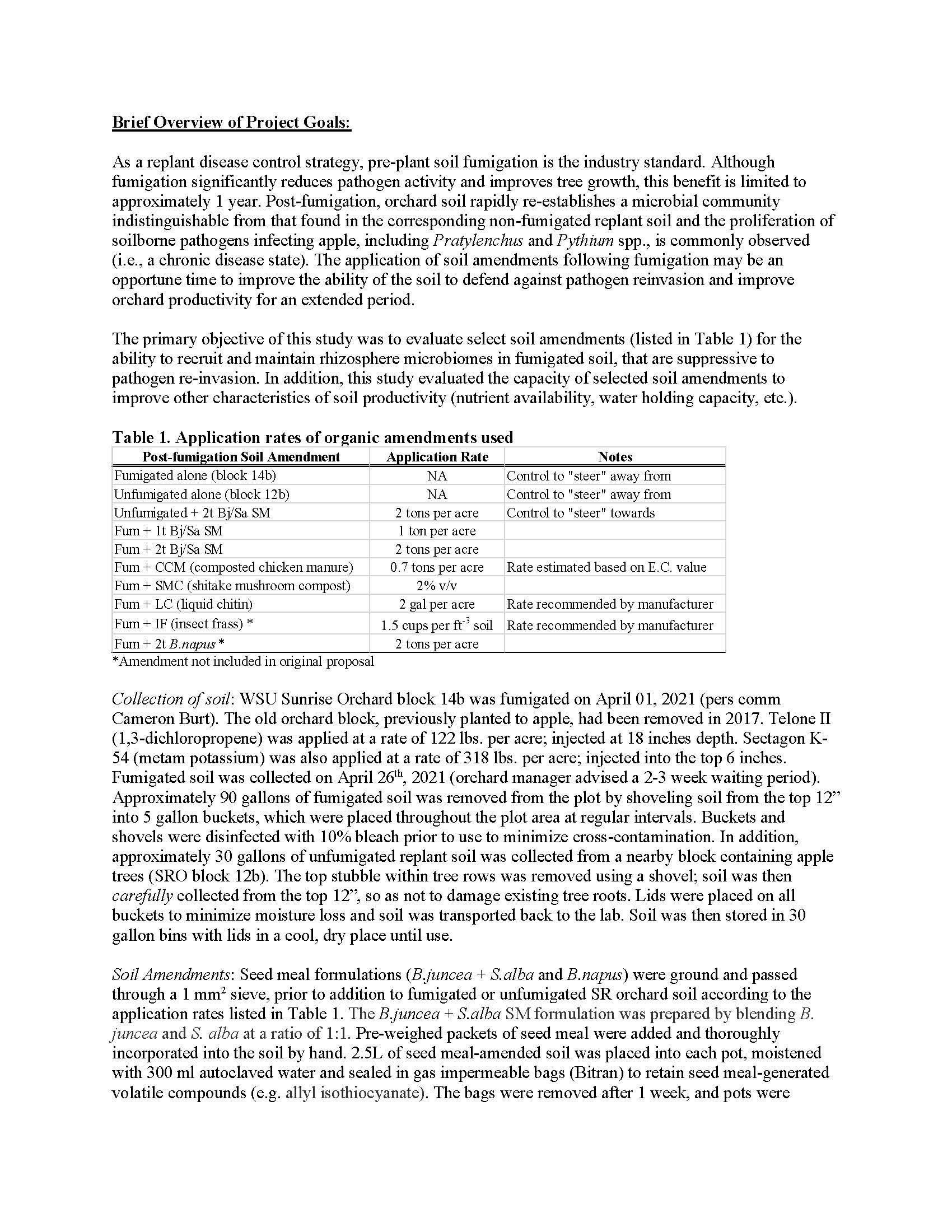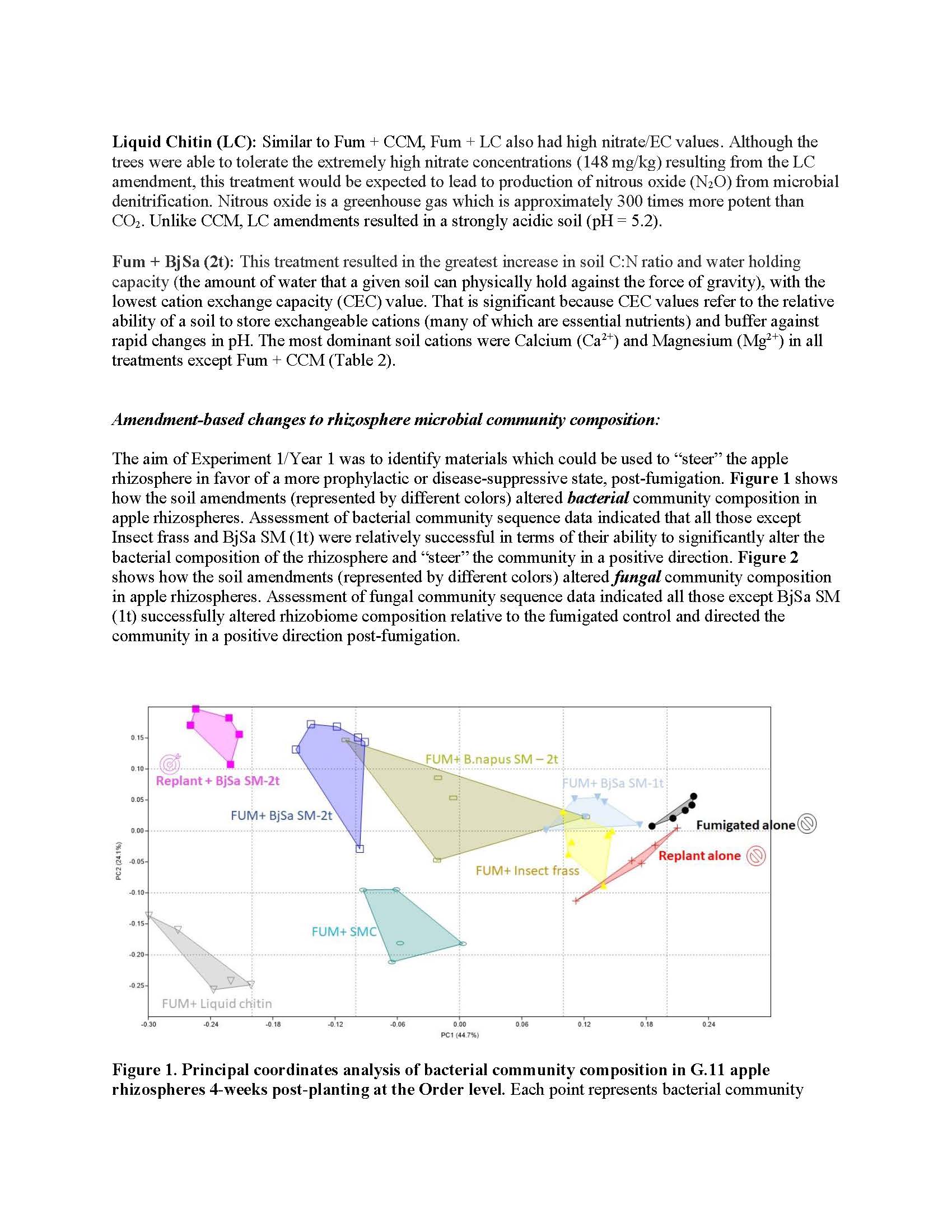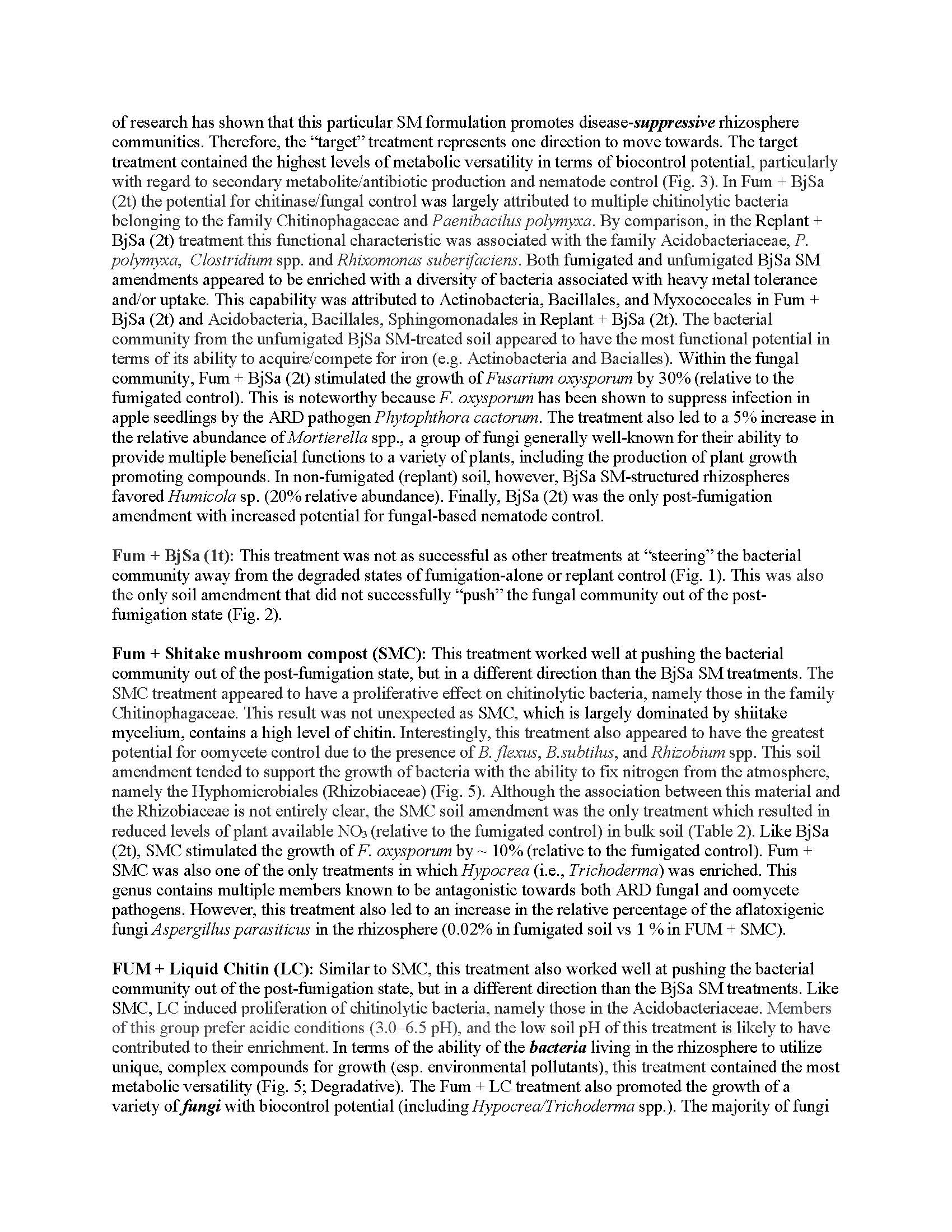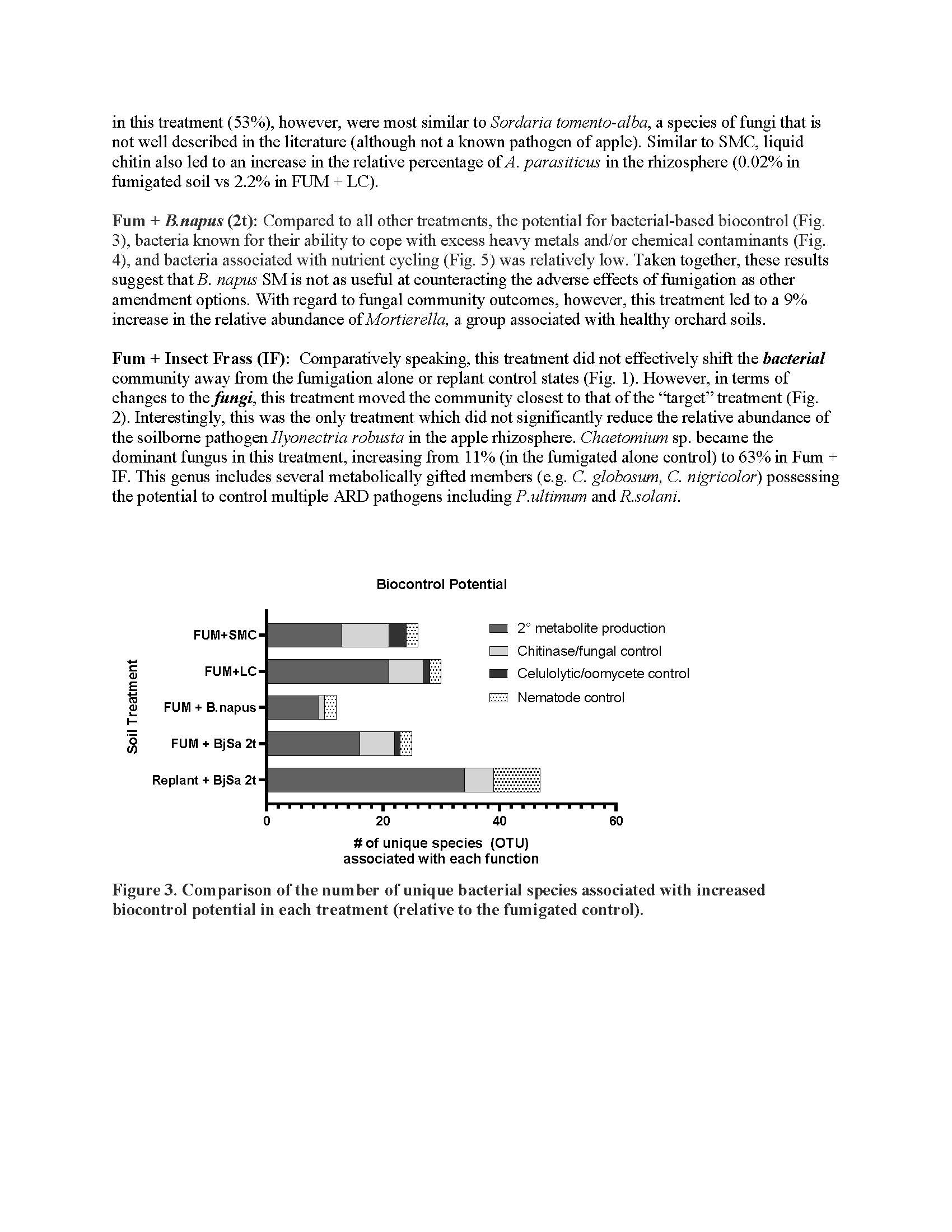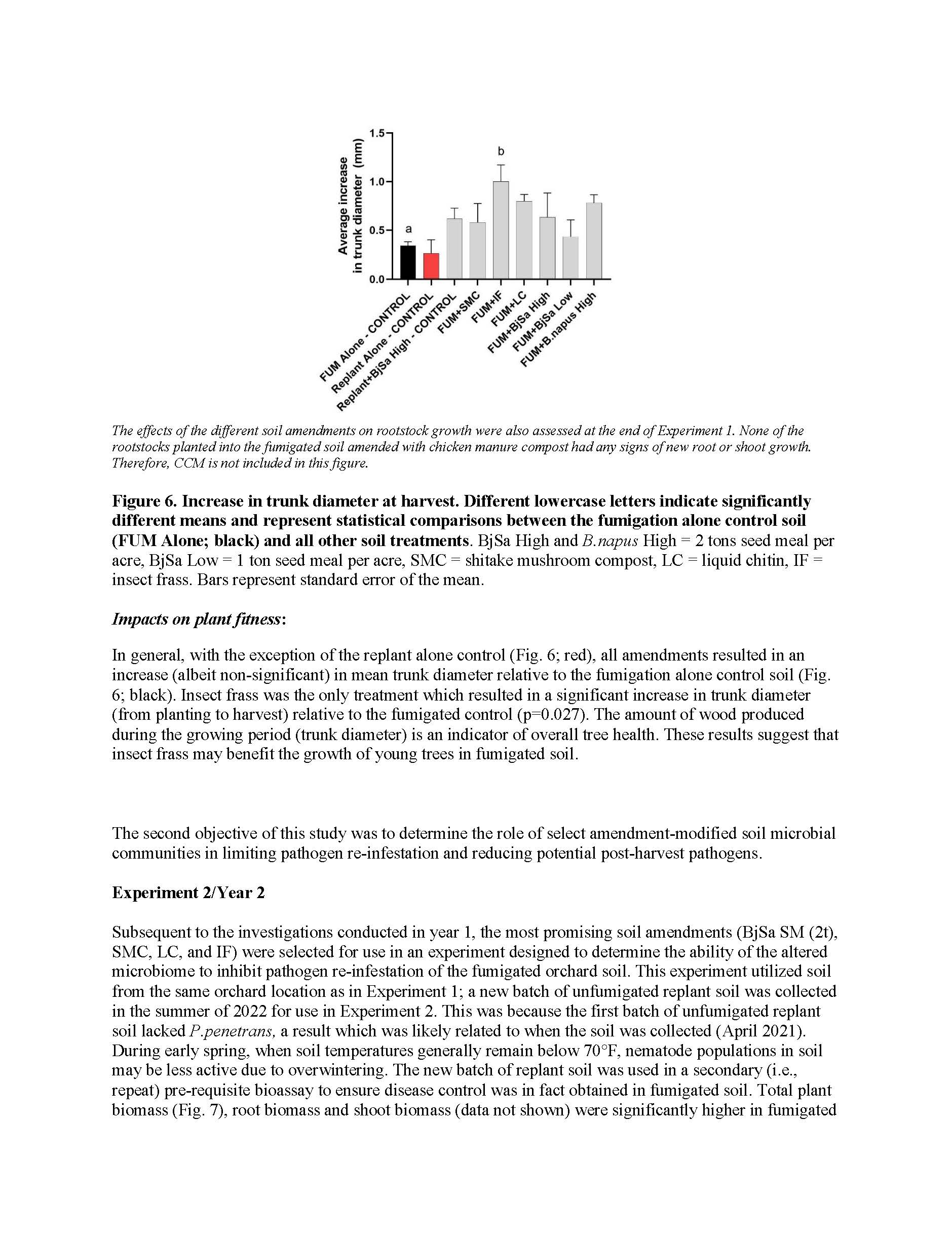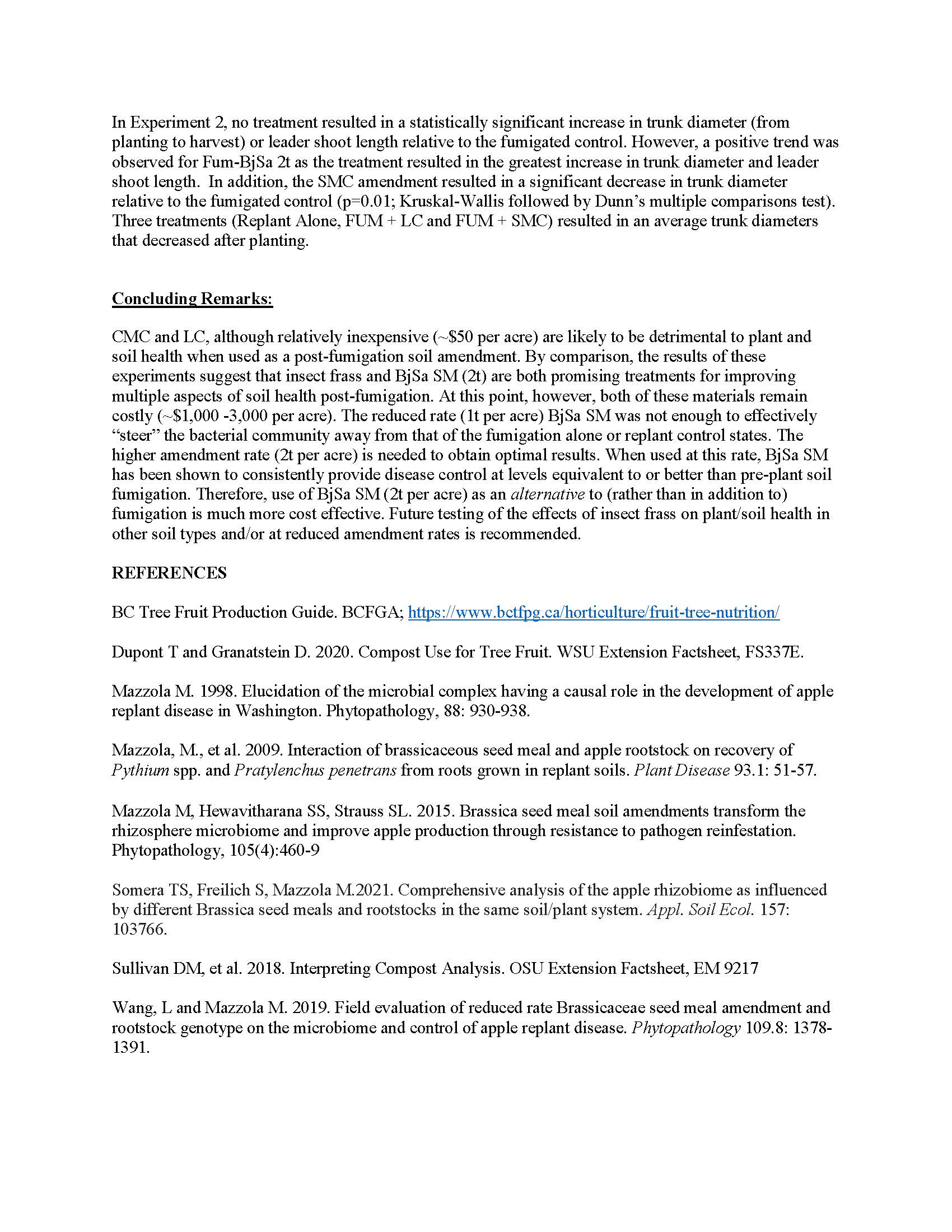Directing plant-microbe relations toward resiliency post-fumigation
Author: Dr. Tracey Somera
Published: 2023
Summary: As a replant disease control strategy, pre-plant soil fumigation is the industry standard. Although fumigation significantly reduces pathogen activity and improves tree growth, this benefit is limited to approximately 1 year. Post-fumigation, orchard soil rapidly re-establishes a microbial community indistinguishable from that found in the corresponding non-fumigated replant soil (i.e., a chronic disease state). The application of soil amendments following fumigation may be an opportune time to improve the ability of the soil to defend against pathogen reinvasion and improve orchard productivity for an extended period. The primary aim of this project was to identify materials which could be used to “steer” the apple rhizosphere in favor of a more prophylactic or disease-suppressive state, post-fumigation. Post-fumigation soil amendments included: Brassica juncea/Sinapis alba seed meal (2t per acre), BjSa seed meal (1t per acre), B.napus seed meal (2t per acre), shitake mushroom compost (SMC, 2% v:v), liquid chitin (LC, 2 gal per acre), composted chicken manure (CCM, 0.7t per acre) and insect frass (IF, 1.5 cups per ft-3 soil). In CCM and LC, high nitrate levels led to high salinity as measured by electrical conductivity (EC) and CCM resulted in the death of all trees. Analysis of microbial community sequence data indicated that the remaining amendments, with the exception of BjSa SM (1t), were relatively successful in terms of their ability to significantly alter the microbial community composition of the rhizosphere microbiome and “steer” the community in a positive direction post-fumigation. Insect frass was the only amendment which resulted in a significant increase in trunk diameter relative to the fumigated control. Insect frass and B. napus SM (2t), however, did not appear to counteract the adverse effects of fumigation on the bacterial rhizobiome as effectively as SMC, LC, or BjSa SM (2t). By comparison, LC was less effective at stimulating the growth of potentially beneficial fungi. A second experiment designed to directly test the ability of the apple rhizosphere to limit pathogen re-infestation post-fumigation was conducted using the ARD pathogen P. ultimum as inoculum. At this time, results suggest that insect frass and BjSa SM (2t) are both good candidates for improving soil health post-fumigation; however, P. ultimum infection levels in root tissue remain to be determined.
Keywords:

